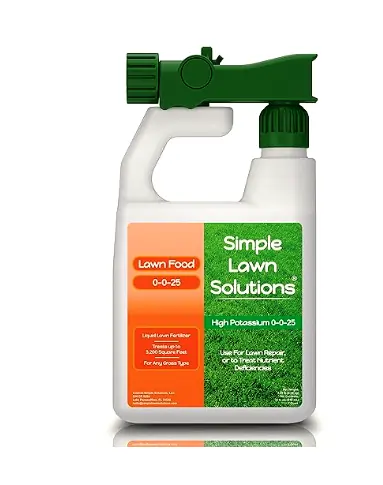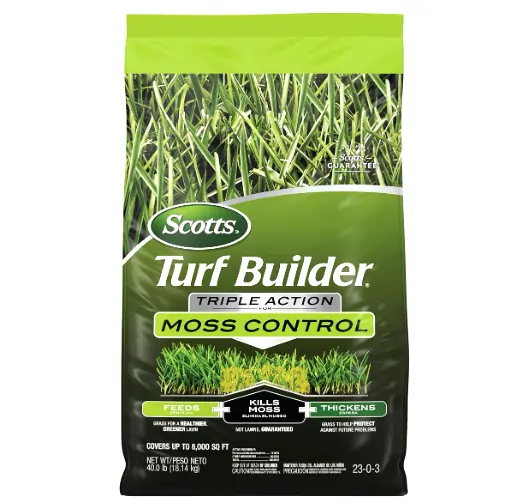Just like the human body requires nutrition for its growth, the same goes for lawns. Of course, we understand you are not an agronomist to understand the perfect timing to water your lawn. All this depends on the weed and feed type that you supply to it. Many get confused about the timings. But wait, trust me, there is a two-way answer to this. This means you need to water them, which is a necessary part of the process after using fertilisers. But knowing this itself is not enough, as it all depends on the perfect timing due to weed control. Read this blog where detailed information is shared on when to water the lawn after applying weed and feed Treatment.
Firstly, let’s summarise for those who don’t know what weed and feed treatment is :
Weed and Feed Treatment
A multipurpose lawn product that gives a boost to your lawn. This product binds the herbicides and fertilisers to create an outstanding combination effective for lawn maintenance. Simultaneously, one can say that it is a technique that discards off and controls weed growth to a certain extent. Fertilisers enhance grass growth, whereas herbicides control weeds.
Further, involves the combination of two different fertilisers to treat the plant.
E.g., the Feed part is full of components like potassium, nitrogen, phosphorus and other plant nutrients. While the weed part is full of Post and Pre-Emergent Weed Feed treatment.
Divided into two broader classes:
- Post-Emergent Weed Feed: An amazing product that does two things at the same time. One is the killing of weeds that are already growing. Second, it also kills the plants that have come in contact with the weed. These plants are those that grow above the ground level. However, one can spray this post-emergent weed feed on any particular part of the plant. After which, the plant absorbs the entire product, kills the weed and finishes off its whole vascular system.
- Pre-Emergent Weed Feed: These products stop the seeds that are affected by weeds from germinating. Pre-Emergent Weed Feed are exclusively designed to inhibit the cell production and prevent enzyme and root growth from occurring. It also does not allow the weeds to grow in the first place.
Now arrives the question of when to water the lawn after weed and feed?
This depends on the type of weed and feed product that one uses. Still confused? Wait while we explain to you in detail.
1. Liquid Weed Feed Treatment:

Liquid weed feed treatment does not require enormous water. They are often less dilute than other weed and feed treatments. One great advantage is that the wait time is very less. Excess water may wash the fertilisers and drain all your hard work. So the thumb rule in this type of weed feed treatment is to wait for around 1 day and then water the lawn.
Additional tips:
- A special advice is to use both pre- and post-emergent liquid weed and feed separately and not at the same time interval.
- Apply pre-emergents early in the morning during spring.
- Whereas, post-emergents must be used during late spring.
- Watering should also be done at two different time intervals.
2. Weed and Feed Treatment:
Post-Emergent Weed Feed:
In Post-Emergent Weed Feed, water the lawn before the application of the product is recommended. Then, one must spread the weed feed when the weeds are still wet. Doing this will ensure that the granules mix properly and dissolve on the weeds. But if you turn this vice versa, i.e granules might dissolve and wash away into the soil in case of watering the lawn after Post-Emergent Weed Feed. To ensure complete safety, it is better to read the manufacturer’s label in order to avoid the fertilisers from penetrating deep into the leaves. As this may destroy the plant completely.
For this reason, few manufacturers give a time limit of 24 to 48 hours before watering the lawn. Whereas others recommend extending the timings to a span of 2 to 3 days, respectively.
Additional Tips:
- Use a sprinkler system to evenly water the lawn.
- Start by showering with somewhere around 1 to ½ inch of water.
- Water thoroughly if staying in hot and humid climate areas, as this will prevent the plants from burning..
- In areas where the climate is damp, less usage of water usage is advisable. Otherwise, the chemicals applied will get diluted.
Pre-Emergent Weed Feed
Start by watering half an inch of water. This must be done within three days of applying the weed feed treatment. Also, ensure that the herbicides get activated in the soil before the weeds begin to germinate. If you do not observe weeds sprouting on your lawn, then regular irrigation is recommended. If the case is reversed, water your lawn on the very same day.
Additional Tips:
- Do not overuse water, as it may lead to dilution of fertilisers and weed killers. Or else the weed and feed treatment will get less effective for the plant.
3. Granular Weed and Feed Treatment

The granular Weed and Feed Treatment arrives in the form of big granules. These fertilisers work slowly and need much time to seep into the soil and react with it. The average water time is somewhat 10-14 days after applying the weed and feed treatment, as all this depends on the m, manufacturer’s label and the type you are using. The reason is that the fertilisers need to activate and break down the enzymes in the soil. Though the lawn burn risk is low still if it is left unwatered, it may cause burning, especially in areas of scorching summer heat.
Additional Tips:
- Post-emergent granular feed-treated lawns must be watered after 2 days.
- 1 to 2 days is the stated time for watering the lawn for Pre-emergent granular feed treatment.
- Apply as a routine part of spring lawn care.
- Shred it off the leaves and water the lawn thoroughly.
Best time to water the Lawn
Speaking of the best time to water the lawn after the fertilisation treatment is only after 24 hours and more. Try watering in the morning during early sunrise. This will clear up all your fungal problems. But if you water it at odd times, like at noon or evening, then it may cause some serious repercussions. This is because, due to a lack of sunlight, the excess water won’t be able to evaporate.
As the excess water remains on the grass overnight, it may lead to dreadful disease in the plant. As we all know that turf disease depends on a wet space for multiplying. So if the lawn is left wet, all the weed and feed treatment that was carried out will go to waste. With that, it will lead to the spread of disease, and the spot might become a breeding ground for pathogens.
Alternatively, why morning time is best now makes sense as it will wash away all the dirt and pathogens that are breeding on the lawn. But if it rains, you get a cherry on top as you don’t need to water your fertiliser. It will also pave the way to removing all the unwanted things left in the soil. Also, it will give good soaking to the lawn and take care of it.
Water your lawns, but don’t overdo it
So the motive behind watering the lawn after fertiliser treatment is to enable enough soaking. This process helps the weed and feed activate inside the soil and cut down the unwanted weed growth. Rather than doing good over overuse of water does more harm to the lawn. It makes the lawn wet and enables large puddles. These puddles can become a gateway to washing away all the soil nutrients that are efficient for plant growth.
Half an inch of water per week is the recommended water limit at the beginning. This number can be achieved by watering for 20 minutes on a single day. This sums up to watering at least three times a week for better and enhanced growth of grass plants.
Conclusion
After applying weed and feed is important to know when to water your lawn for immense success. This is because the water timings depend on the product type, whether it is liquid, granular, pre-emergent or post-emergent. Proper watering activates the herbicides and fertilisers, ensuring weeds are controlled and grass is nourished. Always refer to product instructions for specific wait times, ranging from immediate watering to several days. Additionally, watering in the early morning is ideal to prevent fungal diseases, while avoiding overwatering is key to retaining soil nutrients. Ultimately, strategic watering maximises product effectiveness for a healthy, weed-free lawn.
Read More: How to Quickly Germinate Pepper Seeds Indoors?

